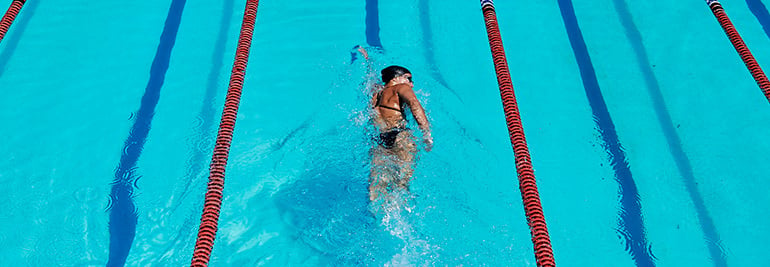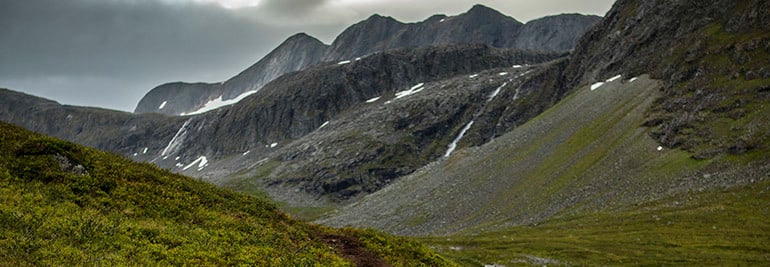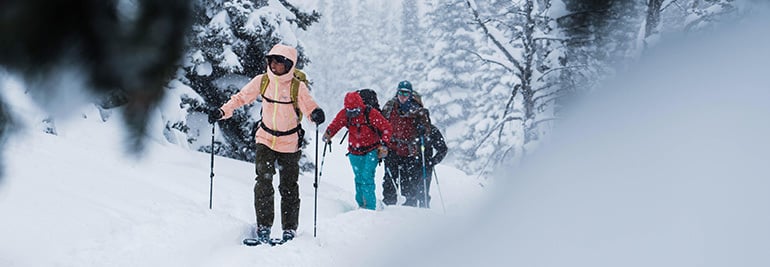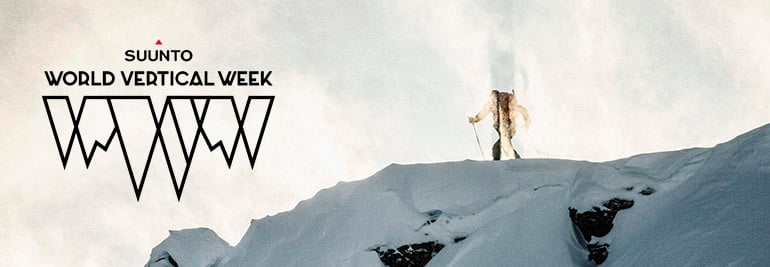

Suunto Blog

7 principles to help you find the flow
If there’s one way to get athletes talking, it’s to ask them about their flow experiences. They sit up, smile, and recall incredibly vivid experiences they will cherish for the rest of the lives. In many ways, flow states are the big reward that keep us going. Kind of like the panoramic view at the top of a mountain that makes the arduous climb worthwhile.
Flow states are a basic human potential. They are available to all of us, not only elite athletes, musicians and artists. With a little knowledge, dedication and practice, we can increase the likelihood of having a flow state experience.
According to mental coach Markus Arvaja, flow states are thoroughly immersive experiences. In his work with top ice hockey, football and tennis players, he tries to put in place the conditions that make flow states, when performance becomes almost effortless, more likely. Markus is a certified sports psychology consultant and senior lecturer in coaching at Finland’s Haaga-Helia University of Applied Sciences.
Click here to read our article explaining the science flow states!
No challenge, no flow
“First,” Markus says, “you need to have a feeling of being challenged, but that you have the competency and self confidence to handle it.” It’s a delicate balance. If the challenge is too great, and you feel out of your depth, lacking the skills for an activity, then it’s unlikely you will experience a flow state. There’s simply too much mental activity happening.
On the other hand, if the task is too easy, and the challenge is too low, then you are likely to be bored, also making flow state unlikely. The sweet spot is somewhere in the middle. So consider what might be a reasonable challenge for you, one that you feel confident in your skills and ability to take on.
Feel positive
The next essential condition for flow state experiences is motivation. “It helps if you can achieve your optimal arousal,” Markus explains. “You need to feel that you are really into the activity.” There’s another balance here. One extreme is boredom, the other is being too excited, almost nervous with anticipation. In the middle is relaxed enthusiasm. One way to achieve this is to remember the reasons you love your sport, what it gives you, a few minutes before you perform. Or maybe listening to music motivates you.
Automate the skill set
The reason top athletes and musicians experience flow is because they have put in the countless hours necessary to master their chosen activities. Whatever your sport, you need to have automated the skills required to experience flow. The action should come naturally from the body without any need for thinking or assessment. “If you don’t trust your technique, it’s hard to achieve the flow,” Markus says. “It’s important you train so much that you are well prepared and can get let go and let it happen. The moment you start to think too much, it’s hard to be in the flow.”
One thought at a time
Did we mention that thinking too much might obstruct a flow state? In the mindfulness movement, teachers talk about the “monkey mind”. Like we often jump from one thought to another, a monkey jumps from branch to branch incessantly. Constant thinking is tiring and distracting. “One good thing to do is to shift your focus to the activity at hand,” Markus says. “For example, if you are a tennis player, you could totally concentrate on moving your feet. It helps to concentrate on one or two things only. If you can do that, you might start to notice the flow. Just play the game and enjoy!”
Have a plan
Having a plan is very helpful, Markus says. For example, if you’re going to run a trail race, the plan might include having your own guidelines for pace, fuelling and heart rate. Well before the race, you might study the course, even train on it to get familiar, so on race day you know when to push and when to take it easy. “Make a plan at home,” Markus says. “That’s what we do in team sports. The less you think on the day, the better you perform.”
Practice mindfulness
“Mindfulness certainly helps,” Markus says. “If your mind is free of worry, and unnecessary thoughts, you can stay in the present moment. It’s good to learn to quiet the mind, to turn off the inner critic. Learn to simplify and focus on one thing.”
Play!
Yes, it’s important to have goals, to have a plan, to automate skills, and to be motivated. But if we get too serious, we risk getting too severe with ourselves and then the sport we once loved can feel like a strain. “Just play!” Markus always tells his clients. “It helps when you are positive and having fun. You can’t force the flow!”

Finding the flow
Photo by Alex Gorham on Unsplash
Studies on flow states show when athletes are experiencing them the thinking part of their brain is offline. “The less you think, the better you perform,” quips Markus Arvaja, a certified sports psychology consultant and senior lecturer in coaching at Finland’s Haaga-Helia University of Applied Sciences. “We’ve studied athletes, the best of the best, studied their brains when they perform, and they have less brain activity in their prefrontal cortex. Which means they have automated their skills so they can purely enjoy their sport.”
When he’s not teaching at university, Markus, himself an ice hockey, football and tennis player, works as a mental coach for Finland’s national women’s ice hockey team and the national youth tennis team. He’s a board member of the Finnish Society of Sports Psychology. He’s passionate about people performing at their absolute best.
“Studies show peak flow states are intrinsically motivating experiences,” he says. “People become so involved in an activity that they are on automatic pilot, totally absorbed in that experience. It’s a merging of action and awareness. Thing is, you can’t force yourself to go into flow. But their are elements that help you enter into the flow space.”
Flow states, peak performance, being in the zone, runner’s highs; these are all interchangeable terms describing the transcendent experiences athletes, artists, musicians and creatives report having. Maybe you’ve experienced one yourself. Time slows down, you become totally immersed in the task at hand, it feels effortless, maybe the world seems more vivid, and you have sense of mastery. They are when athletes have their best performances and, according to Mihaly Csikszentmihalyi, who wrote a seminal book on the topic, they are a key aspect of human happiness. It’s something we can all experience, not only elite athletes and artists.
Neuroscience has revealed much about what’s happening in the brain during a flow state. Brain waves change from beta, more rapid waves underlying waking consciousness, to somewhere between alpha and theta waves, where we daydream and first enter into sleep. This is when many people have their best ideas. Neurochemicals associated with pleasure and performance – endorphin, serotonin, dopamine, norepinephrine and anandamide – are the raw ingredients of flow. Perhaps the most interesting fact is how different regions of the brain respond during flow; for example, studies have found the prefrontal cortex, the area of the brain associated with self monitoring – and also self criticism – goes offline during flow. Instead of constantly analysing and evaluating, we do things spontaneously.
“Sometimes coaches can interrupt the flow happening for athletes by giving too much information for the athletes’ minds,” Markus says. “It’s better to say only one or two things.
“For flow, your mind should be free of worry and unnecessary thoughts. Stay in the present moment by quieting the mind and turning off the inner critic. Mindfulness certainly helps with this.”
Stay tuned for the next article in our series on flow: the ingredients of flow.

The art of battle: 6 tactics to slay your competitors
Let your plans be dark and impenetrable as night, and when you move, fall like a thunderbolt.― Sun Tzu, The Art of War
Pro triathlete Cody Beals loves a good race battle. He’s been having them since his high school cross-country days. More recently, he fought it out against two athletes at the inaugural Challenge Cancun triathlon, ultimately placing second. Cody thrives on competition, and is not afraid to employ deception to defeat his rivals.
The most dramatic battles, he says, are when you are neck and neck with another athlete. Knowing how to do battle is an important part of triathlon. It’s something that can be trained, and requires a certain degree of cunning. Cody shares his tactics.
6 tactics to overcome your rivals
1. Let them do the work
The supreme art of war is to subdue the enemy without fighting.― Sun Tzu, The Art of War
Cody advises to sit back and let your rival work for you. He learned this the hard way after many years of trying to be at the front of the pack, especially on the runs. He expended so much energy doing this he got his butt kicked in finishing sprints over and over again. He eventually learned it’s better to sit back, bide his time, allowing his rivals to do the work.
“This offers a strong physiological advantage on the swim and the bike if you're drafting off other athletes, within race rules,” he says. “On the run, it's a small advantage physically, but more psychological.
“It’s a good tactic if you find yourself neck and neck with someone else. It's the Muhammed Ali rope-a-dope thing; acting like you’re weak and sand bagging a little bit.”
2. Play up a perceived weakness or look strong
Appear weak when you are strong, and strong when you are weak.― Sun Tzu, The Art of War
In his own words, Cody says he’s “not the prettiest runner”. This is true when he’s fresh, and even more so at back sections of Ironman courses. In certain situations, when he wants his rivals to believe he’s in worse shape than he really is, Cody accentuates his running style.
“I let my head wobble back and forth, throw my arms even wider, looking worse than in reality, when in fact that's just how I run,” he says. “This can get into another athlete’s head.”
Alternatively, the opposite ruse – looking stronger than you really are – is also advisable in certain situations.
“This is often something you do out in back sections of the run course,” Cody says. “Most triathlons feature sections like this where you can scope out the competition. I like to smile at my rivals, maybe give them a thumbs up. Or to really get inside their head, I might offer a word of encouragement, like a ‘good job’.”
3. Remember they are struggling, too
In the midst of chaos, there is also opportunity― Sun-Tzu, The Art of War
In the heat of a race, when he’s really suffering, Cody likes to remind himself that his rivals are, too.
“I like to tell myself that they are suffering as much or more than I am,” he says. “Often you feel like you are locked in this titanic struggle all on your own. But it bears remembering that everyone else out there is also going through this. Remembering that gives me strength.”
4. Block them out
When the outlook is bright, bring it before their eyes; but tell them nothing when the situation is gloomy.― Sun Tzu, The Art of War
As a last resort, when things get really tough, Cody advises to turn inward.
“The other thing you can do is outright ignore them, pretend other athletes on the course don’t even exist,” he says. “This is a last resort. I think the most useful strategy is to engage the competition, to engage with the pain, to be very present and mindful about what is happening. However, as a last resort, you can detach from everything happening, including the competition, and turn your focus inwards.”
5. Prepare well for battle
Plan for what it is difficult while it is easy, do what is great while it is small.― Sun Tzu, The Art of War
Intense competition can rattle even experienced pro athletes like Cody. That’s why he dedicates a significant amount of time to preparing for it.
“In pretty much all my difficult training sessions I will dedicate some time to visualisation, specifically around other athletes,” he explains. “If I know who I’m going to be racing, they will figure into my visualisation. I will practice a key moment involving that athlete and rehearse it again and again mentally. For example, I might go over a certain pass, where I'm going to drop them, or us locked in a finishing sprint. It’s extremely repetitive so when it comes to the actual moment in the race, it’s almost like a dream because I’ve practiced it so many time before.”
6. Make an alliance
If you do not seek out allies and helpers, you will be isolated and weak.― Sun Tzu, The Art of War
Once in a while, during a race that isn’t going well, and only in the bike stage, Cody says making an alliance with another athlete can sometimes be helpful.
“It’s always with an athlete who I think I can outrun, but who rides similarly to me,” he says. “If I think I can leverage that, and gain something by being cooperative on the bike by legally working together with the 12 m spacing, that’s worthwhile. It rarely works out in practice, but sometimes you can find yourself with one or two other athletes and it pays to work together.”

Big data for Vertical Week 2019 is here: find out who came out on top!
Like every year after World Vertical Week, our data analysts have combed the stats collected on Suunto app and presented us with the countries and sports that have climbed the most.
When we crunched the statistics from all the training around the world during Suunto World Vertical Week 2019, we felt our hard work had paid off. It had given you all the excuse to chase meters outside, whether on behalf of your nation, chosen sport or for your own challenge – exactly our intention.
There’s something about the sight of a hill or mountain in front of us that calls us to push ourselves. The challenge of the ascent is just as satisfying as the view from the top. That’s why we do it! Well done to everyone who participated.
Top countries
This year, we first report a major upset. In the previous two years, Austria has come out on top as the nation that achieves the most vertical gain by average. Not this year – the Alpine nation has been knocked off its perch. This year, Italy, Slovakia and Slovenia, all mountainous nations, climbed more than Austria. But more surprising, Portugal also came in ahead of Austria.
In the last two years the Swiss have also come in near the top, but this year they have dropped to the eighth position. What’s happened in Austria and Switzerland? Someone tell us!
Honorable mention
This year, Spain deserves an honorable mention. Spain came first in three divisions: totals per country, mountaineering, and trekking. It was also in the top five for four different activities: mountaineering, trekking, mountain biking and cycling. All up, Spain features in six of the nine country-related lists below, the only country to do so. Well done Espana!
Here are the results by nation
While these numbers might not seem so mind-blowing, remember they are averages, and a high average is indicative of many big days out in the hills.
Italy 385 m
Slovakia 360 m
Slovenia 346 m
Portugal 342 m
Austria 337 m
Spain 308 m
Switzerland 288 m
France 283 m
Canada 276 m
Norway 261 m
Totals per country
This year we also decided to look at the totals per country. In these countries, World Vertical Week participants have been really active and gotten out there to climb, even only a little, to add on their country’s total number. These little efforts have added up.
Spain 645.000 m
France 546.000 m
Italy 379.000 m
United States 377.000 m
China 250.000 m
Austria 216.000 m
United Kingdom 183.000 m
Japan 150.000 m
Norway 142.000 m
Switzerland 140.000 m
Average ascent by activity
At least as interesting as the country numbers are the activity specific stats. From these, we can see that skiers clearly put in the biggest average days. Trail running and mountain biking are probably under-represented because it’s winter in the populous Northern Hemisphere.
Like Vertical Week 2018, ski touring, mountaineering and trail running came out on top this year. The question is, which nations did the most of each?
Ski touring 830 m
Mountaineering 594 m
Trail running 474 m
Mountain biking 355 m
Trekking 311 m
Hiking 213 m
Nordic skiing 199 m
Cycling 193 m
Running 100 m
Activity by country
Ski touring
France 1127m
Italy 1085m
Austria 864m
Switzerland 828m
Germany 776m
Two countries pass 1000 m of vertical gain by average!
Mountaineering
Spain 1071m
UK 947m
Poland 798m
USA 716m
Germany 651m
Trail running
Hong Kong 1176m
Japan 901m
Malaysia 813m
China 765m
Portugal 713m
Asia dominating, showing the growing popularity of the sport in the region!
Mountain biking
Italy 476m
Slovakia 474m
UK 437m
Spain 422m
Austria 394m
Cycling
Colombia 499m
South Africa 485m
Israel 446m
Spain 438m
Italy 363m
These nations have favorable weather for cycling in March!
Nordic skiing
France 379m
Canada 321m
USA 285m
Norway 243m
Austria 212m
Trekking
Spain 566m
Italy 527m
Malaysia 363m
Italy 362m
Poland 304m
Individual top performances
While we can’t give away too much information here, such as who and where, we can share some insight in the individual top performances over the week: To be on the pointy end of the rankings one had to climb more than 10000 meters over World Vertical Week. And to stand out with a single activity one had to climb 4000+ meters in one go!
Thank you, everyone, for participating!
Read three inspiring stories from the World Vertical Week!

Chasing meters: top stories from Vertical Week 2019
The fourth annual Suunto Vertical Week is coming to a close and we have selected three winners of the week’s photo contest on Instagram. Each of them will receive a powerful Suunto 9 to record their efforts! We received many other inspiring images and stories (#verticalweek) – thanks to everyone for their contributions! Keep climbing!
Baby in tow in Norway
We were very impressed by Hilde Hoff Nordskar in Norway. She climbed 3246 m in a week, while towing her seven-month-old baby boy, who slept through it all. Some have it easy! Well done, Hilde!
“Vertical Week was overall very hard and fun and brought some new inspiration to my maternity leave,” Hilde says. “We live close to a forest and my daily goal was to summit the top of a nearby peak called 'Solobservatoriet' (580 m). With my seven-month-old son in the wagon behind, I started every morning skinning up the hill no matter the weather. The highlights was to experience the uphill in all these different winter wonderland conditions and finish every session with a big smile on my face and a very rested kid.”
View this post on Instagram
Punta di Terrarossa 🏔 3246 meters climbing in a week 🎿👶🏻 #VerticalWeek #Suuntoapp @suunto_norge @suunto @thule #thulebringyourkids #dæhlie
A post shared by hildehoffnordskar (@hildehoffnordskar) on Mar 9, 2019 at 8:48am PST
Big training block in California
Eric Triplett in sunny California enjoyed a big week, climbing 3500m. This beautiful shot of sunrise from Mount Wilson illustrates the motivation behind the call to scale peaks; massive rewards for our hard work.
“Suunto Vertical Week was the perfect way to finish up a three month training block for my upcoming race,” Eric says. “The race features 3000 m of climbing over 56 km so my primary goals for Vertical Week were to simulate the amount of gain relative to the distance of my race and to accumulate at least 3000 m of gain. I’m happy to say I was able to complete 3500 m for the week including a 33 km run with 2100 m of vertical. Thanks to Suunto for putting on this motivating celebration of vertical!”
View this post on Instagram
The sun rises on the last day of #VerticalWeek 2019 // It’s been a while since I’ve cracked 11,000ft of gain in a week so I made it a goal given both Vertical Week and that 9 Trails is coming in just two weeks. Admittedly going beyond 10,000ft seems to bring on the sore knees and other random leg pain but that only serves to highlight what to work on in the future // Been super excited about getting my hands on “Training for the Uphill Athlete” by House, Johnston and Jornet. I think it’s going to help take things next level. // I’m also very happy with where @Sagerunning training has taken me in the last 3 months. I’ve never thought I could maintain the kind weekly mileage that I have for so long. I was always afraid to put intervals into 20mi+ runs but I survived. It hasn’t been easy but listening to my body and making small adjustments has got me through. // #utlrarunning #trailrunning #runinrabbit #borntorunfree #rabbitTrail #RADrabbit #gotailwind #timetoplay #salomon #suunto #salomonrunning #9T #NineTrails #sagerunning #SanGabrielSunday #longrun #ANF
A post shared by Eric Triplett (@fleshymutant) on Mar 10, 2019 at 9:08pm PDT
New season in Finland
Janne Korpela in Finland has begun a new training block now spring has nearly arrived. It hasn’t been in a walk in the park, either, on some days finding himself waist deep in snow. Keep going, Janne!
“Vertical Week was surprisingly good, since it was only the third proper training week of the year for me with 19 hours of training,” he says. “The highlight of the week was the first day, when a six hour session was surprisingly easy. And last Sunday was a beautiful spring day!
“The goal was 8000m in eight days, but we pushed it a bit yesterday to climb the height of Everest (8848 m)! I did all the climbing on an old ski slope close to my home. One lap is about 35 meters of climbing!”
View this post on Instagram
A post shared by Juosten (@juosten_) on Mar 10, 2019 at 6:02am PDT
Lead image: © Dylan Totaro / Suunto

Suunto World Vertical Week 2019
For some of us a climb is a challenge, an obstacle to overcome. With training we get stronger and can climb the same hill easier – or faster. But it usually does not last long before we set our eyes on even bigger or faster or more challenging climbs.
For others a climb is an adventure, a promise that once we reach the top, col or ridgeline new horizons will open up and broaden our views and, on the way down, we will get to play with gravity.
Whatever your motivation, Suunto’s annual Vertical Week is here again!
Suunto World Vertical Week 2019 starts on Sunday, March 3rd and ends on Sunday, March 10th.
Put on your running shoes, hop on your bike or release your heels and start skinning up the hill. Track your adventures with your Suunto watch, upload your activities to Suunto app and, by the end of the week, we’ll know who climbs the most in a week. And it’s not only about individual performances: we want to see which country averages most vertical during the week and which activity takes you up the biggest climbs.
To participate, join the challenge in Suunto app!
SHARE YOUR EXPERIENCE AND WIN A SUUNTO 9
Share your Suunto World Vertical Week experiences on Instagram using Suunto app’s photo sharing with data overlays and use tag #VerticalWeek. Three of the most inspiring posts will win Suunto 9 watches.
Terms and conditions apply. Read them here.
Learn how to share your activities using Suunto app
Don’t have Suunto app yet? Get it now!





























































